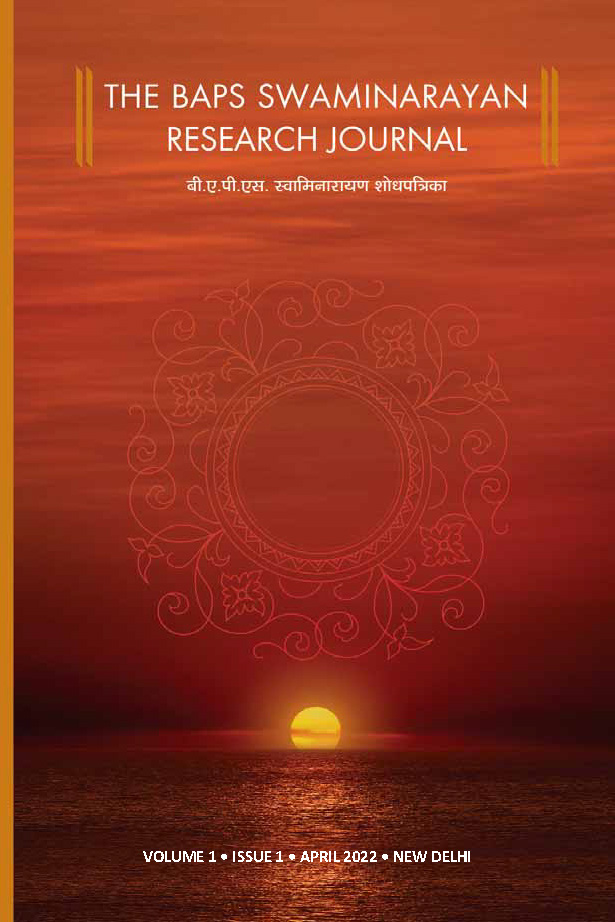Abstract
The Vedānta darśanic tradition is distinctive in its emphasis on philosophical and theological thought. Each darśana is established on a set of foundational principles that serve to distinguish it from others that share its intellectual domain. Among other principles, these darśanas place particular emphasis on their distinctive understanding of the nature and form of brahman, the self, the world, and the relationships between them. The names of each of these schools also exhibit this emphasis by reflecting the darśana’s characteristic ontological enumerations or the metaphysical relationships between its accepted entities.
This work offers a study of the Akṣara-Puruṣottama Darśana within this darśanic framework. It presents an investigation of the following two assertions:
- The Akṣara-Puruṣottama Siddhānta as it has been revealed by Bhagavān Swaminarayan (Svāminārāyaṇa) is a distinct darśanic doctrine.
- Swaminarayan’s philosophy is appropriately identified by the title: “The Akṣara-Puruṣottama Darśana.”
The inquiry into the first assertion presents distinctive features of Śaṅkara’s Advaita and Rāmānuja’s Viśiṣṭādvaita Vedānta. Foundational differences in their understanding of 1) brahmajñāna: the nature and form of brahman, Parabrahman, the self, and the relationship between them; 2) sādhanā – spiritual endeavour; and 3) the state of liberation play a key role in identifying both as distinct darśanic positions. Thereafter, upon presenting the foundational principles of the Akṣara-Puruṣottama Darśana and contrasting them with those of Śaṅkara and Rāmānuja, this work concludes that the philosophical and theological differences that serve to distinguish Rāmānuja’s darśana from Śaṅkara’s also set apart the Akṣara-Puruṣottama Darśana from both Advaita and Viśiṣṭādvaita.
The second half of this work investigates the dynamics underlying the identification of Svāminārāyaṇa Vedanta as the Akṣara-Puruṣottama Darśana. It elaborates on how ‘Akṣara-Puruṣottama’ succinctly expresses the foundational principle of the darśana: to become Akṣararūpa and offer upāsanā (worshipful service) or bhakti (devotion) to Parabrahman with dāsabhāva., This title incorporates the darśana’s unique ontological position along with its understanding of brahmavidyā, spiritual endeavour (sādhanā), and liberation. This work concludes that as a result, Bhagavān Swaminarayan’s darśana is appropriately identified as the “Akṣara-Puruṣottama Darśana.”

